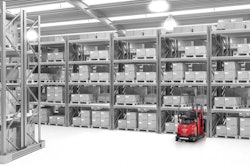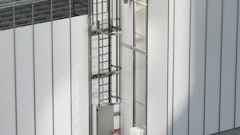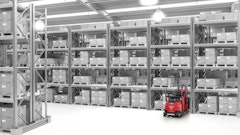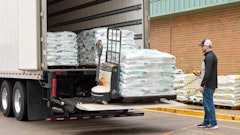
Nearly 63% of warehouse leaders plan to implement artificial intelligence (AI) software and augmented reality (AR) within five years, with 64% planning to increase spending on warehouse modernization in the next five years, and 63% already accelerating their modernization timelines or planning to do so by 2029, according to a study released by Zebra Technologies Corporation.
“Warehouse associates are telling us they feel their lives would be better if their employers thoughtfully integrated more automation solutions into their workflows,” says Andres Boullosa, global warehouse vertical strategy leader, Zebra Technologies. “Automating material movement, data collection, and information management helps make busy warehouses safer. It also makes it easier for teams to meet SLAs and maintain a steady, reliable flow of quality goods to the market, which increases both customer satisfaction and worker engagement.”
Key takeaways:
- 85% of associates say, “If my employer does not invest in technology to improve warehouse operations, we will not meet business objectives.”
- 74% of associates are concerned they are spending too much time on tasks that could be automated.
- 72% of associates are concerned about safety on the (increasingly busy) warehouse floor with 70% specifically worried about injuries.
- 69% of associates reported there is a lack of qualified staff on the warehouse floor and express concerns about fatigue and physical exhaustion.
- Even warehouse leaders admit they find it challenging to maintain the fill rates (51%) and prepare orders (47%) outlined in their service level agreements (SLAs), with order accuracy and outbound processes cited as the Top 2 operational challenges. Increased e-commerce activity is also making “faster delivery to the end-customer” a top challenge for warehouse teams, even as technology use is on the rise.
- Given the disparity between customers’ growing expectations and warehouse operators’ limited hiring capacity, warehouse associates say it’s important that collaborative robots (88%), ergonomic mobile devices (88%), communications applications (87%), and task management tools (91%) are used to help solve workplace issues.
- 93% of associates agree the increased availability of automation and mobile technologies would help attract and retain more warehouse associates, and 89% say they feel more valued by their employers when provided with technology tools and automation designed to help them.
- While 79% say AI will positively impact their ability to detect potential hazards and issue alerts for prevention, 78% think AI would make an impact on their ability to detect issues or anomalies using AI. In addition, 77% feel AI applications would impact their ability to forecast needs, streamline stock levels, and maximize space using AI applications.
- Many warehouse leaders who plan to augment/automate or have already done so say their goal is to mitigate errors (71%) and meet SLAs (70%). They hope automation will increase worker efficiency and productivity (54%) as well as reduce order errors and manual picking (53%). Plus, 82% of warehouse leaders agree giving warehouse workers more technology tools will help them exceed productivity goals while reducing physical strain and preventing injuries. Eighty-one percent of the leaders also admit automation improves morale.
- Warehouse leaders say their biggest supply chain network challenges are “innovating with technology and intelligent automation” and “meeting changing customer service expectations.” Yet, the latter will not prove possible until warehouse leaders figure out a clear path forward with technology.



![Pros To Know 2026 [color]](https://img.sdcexec.com/mindful/acbm/workspaces/default/uploads/2025/08/prostoknow-2026-color.mduFvhpgMk.png?auto=format%2Ccompress&bg=fff&fill-color=fff&fit=fill&h=100&q=70&w=100)








![Pros To Know 2026 [color]](https://img.sdcexec.com/mindful/acbm/workspaces/default/uploads/2025/08/prostoknow-2026-color.mduFvhpgMk.png?ar=16%3A9&auto=format%2Ccompress&bg=fff&fill-color=fff&fit=fill&h=135&q=70&w=240)






